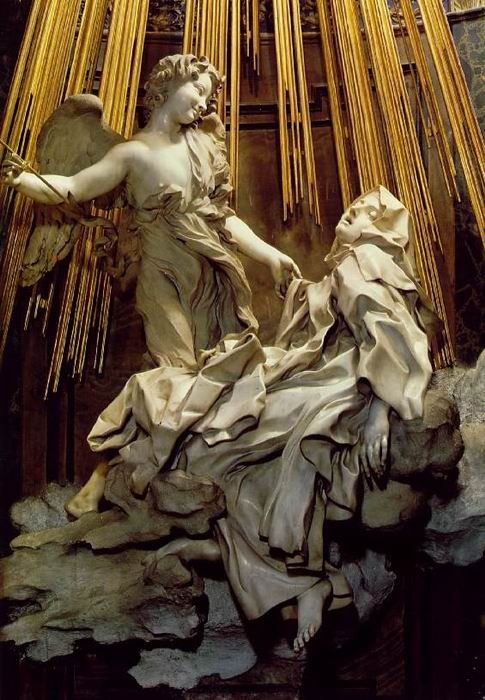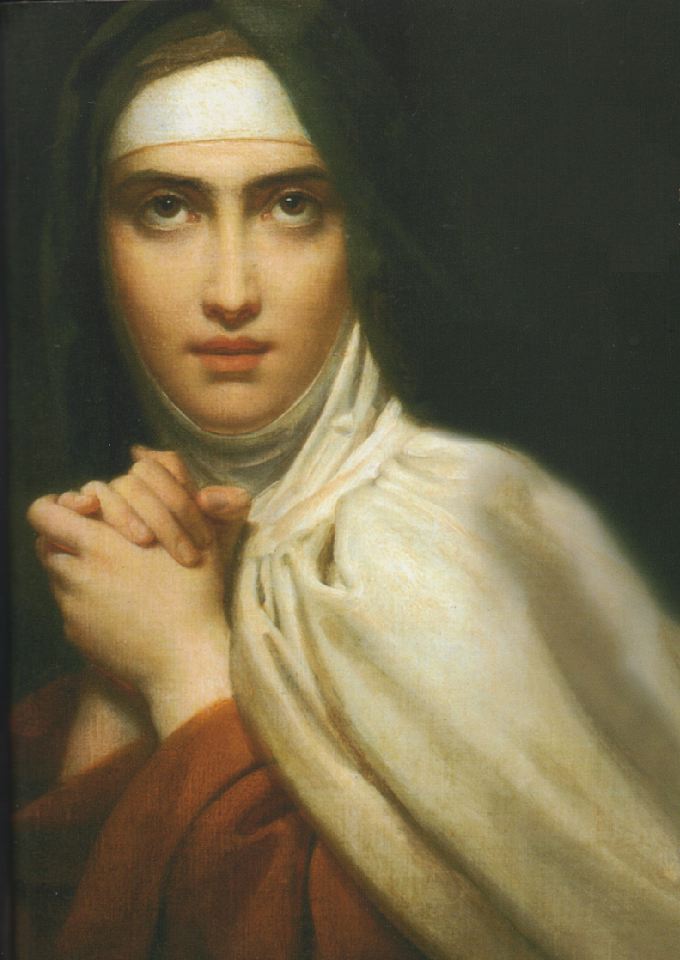In accordance with our
study of the Counter Reformation, I will look at another figure of the period –
St. Teresa of Avila – through the lens of two different works of art. Teresa of
Avila (1515-1582) is best known for her mysticism, writings, and leadership in
the Carmelite order in Spain. During her
lifetime, she remained persistent in the growth of a reform-minded Carmelite
order, as well as wrote works such as Way of Perfection and her Autobiography
(Zophy 261-262). I desired to compare two works focused on St. Teresa of
Avila in order to demonstrate both her own legacy and that of the Counter
Reformation.
The first work is
Bernini’s infamous sculpture, The Ecstasy of St. Teresa. Sculpted in the
years 1647-1652, the work stands as a testimony to Teresa of Avila’s distinct
mysticism, as it depicts her in the midst of a religious vision. As the viewer
can see, the sculpture retains all the drama of the Baroque period whilst
rendering the saint as overwhelmingly beholden to her spiritual vision.
Moreover, the facial expressions of both Teresa and the other figure evoke
emotion and vivid experience. The multiple folds of Teresa’s garb add further
spectacle to the scene. In comparison, the second work, Baron Francois Gerard’s
St. Teresa, is altogether different, but this naturally stems from its
later time frame (early 19th century) and thus, Romantic style. The
portrait simply gives a modest Teresa, with eyes that angled upward convey a
subtle link to mysticism, but moreover, convey a blend of piety and mystery.
Gerard gives an ideal Teresa, quiet but impactful in beauty and mystery, a
spiritual figure from a faraway, lost place (hence approximately two centuries
in separation between the portrait and her death). Bernini equally moves away from reality, but
in a way that still seems evocative of the mysticism central to St. Teresa’s character
and even the criticism she faced. The works are in truth mostly contrasting
depictions of St. Teresa, but they both persist in demonstrating the historical
impact of reformers from the period, who tend to appear as stabilizers not defectors
after their lifetimes.


Sources:
http://www.metmuseum.org/toah/hd/bern/hd_bern.htm
http://www.wga.hu/html_m/g/gerard/7theresa.html
Images:
http://www.artble.com/imgs/d/a/5/431705/the_ecstasy_of_saint_theresa.jpg
https://fraangelicoinstitute.com/2012/10/15/st-teresa-of-avila-on-love/teresa_avila_gerard/
Great post Sadie! I love both of these artworks!!! The two are very representative of their centuries, which is quite amazing because you can see the changes in art throughout time!
ReplyDeleteI am still slightly shocked that the "Ecstasy of St. Teresa" is located in a church!!
Sadie, did the 19th century image remind you of depictions of Joan of arc!? Chanel, her passion was brought to earth for all viewers. If only we all had such passion, it seems to say. Looking forward to checking this out in Rome.
ReplyDelete